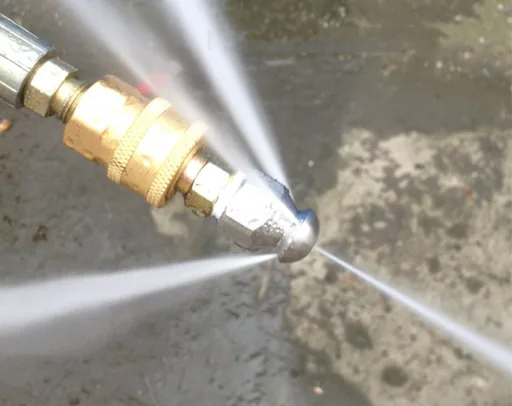Dracaena Care Guide: How to Keep Your Indoor Plant Thriving
Dracaena is a favorite for indoor growing, due to its not-so-demanding characteristics, colorful foliage, and air-purifying quality. Whether you’re in a tiny apartment or have a big living room, a Dracaena can bring the look of the outdoors in with mature greenery.
According to Growcycle, dracaena plants are perfect for busy households or offices because they require minimal watering, adapt well to low light, and naturally resist pests. With proper care, Dracaenas not only enhance your space visually but also improve air quality by removing indoor toxins.
If you’ve ever been curious about how to take care of this stunning plant and keep it looking beautiful, this guide will cover everything from how to water it and the light it needs to how to care for, propagate, and troubleshoot it properly.
Why Dracaena Is the Perfect Indoor Plant
Dracaena looks good and is very easy to grow, so it is suitable for beginners and more experienced plant growers. Here’s why that’s a favorite plant:
- Air Purifying: Dracaena is known to remove harmful toxins like formaldehyde, xylene, and toluene from indoor air, helping your home feel fresher.
- Low Maintenance: It thrives in moderate light and doesn’t require frequent watering, perfect for busy lifestyles.
- Decor-Friendly: The plant’s upright growth and dramatic leaves add a modern touch to any room.
- Longevity: With the right care, Dracaena can live for years, continuously adding greenery to your home.
Popular species include Dracaena marginata (Dragon Tree), Dracaena fragrans (Corn Plant), and Dracaena reflexa (Song of India). The requisites are the same in most regards, though, and the care required isn’t so dissimilar, so you can pretty much pick the one that suits your space.
Light, Water, and Soil: The Essentials for Healthy Growth
The foundation of caring for a Dracaena is moderate lighting, adequate water, and well-draining soil. Here are some simple steps you can take to keep your plant thriving:
Light
- Dracaena grows best in bright, indirect light.
- Can tolerate low light, but growth may slow, and leaves may lose their vibrant color.
- Avoid direct sunlight, which can scorch the leaves.
- Rotate the plant occasionally so all sides receive light evenly.
Watering
- Keep the soil slightly moist, allowing the top inch to dry between waterings.
- Reduce watering during winter when growth slows.
- Avoid overwatering, as Dracaena is susceptible to root rot.
Soil and Potting
- Use a well-draining potting mix—a combination of peat, perlite, and indoor soil works best.
- Ensure the pot has drainage holes to prevent waterlogging.
- Repot every 2–3 years to refresh the soil and encourage root growth.
By getting these basics right, you set your Dracaena up for long-term health and beautiful foliage.
Fertilizing and Pruning for a Thriving Dracaena
Even low-maintenance plants like Dracaena benefit from occasional fertilization and pruning.
Fertilizing
- Feed your plant with a balanced liquid fertilizer once a month during spring and summer.
- Avoid fertilizing in fall and winter when growth naturally slows.
- Too much fertilizer can cause brown tips or yellowing leaves, so less is more.
Pruning
- Remove yellow, damaged, or dead leaves to maintain a tidy appearance.
- For tall varieties, prune stems to encourage bushier growth.
- Wipe leaves with a damp cloth to remove dust, which improves photosynthesis.
Proper pruning and feeding not only improve appearance but also stimulate healthier, faster growth.
Propagation: Grow Your Dracaena Collection
One of the great things about the Dracaena plant is how simple it is to propagate. You don’t have to buy new plants to add to your indoor garden.
How to Propagate
- Stem Cuttings: Snip off a section of healthy stem and put it into water or damp soil. Roots develop in a few weeks.
- Division: If the plant has a lot of stems, carefully divide them and plant them out in new pots.
Propagating is straightforward and will allow you to share a plant with friends or to spread them around other rooms of your house.
Common Problems and How to Fix Them
Even durable plants like Dracaena are not immune. Here’s how to fix some of the most common issues:
- Drying of Leaves: This may be happening due to low humidity in the immediate area of the plant; it is also possible that your plant has received too much direct sunlight or has been over-fertilized.
- Yellow Leaves: Generally an indication of overwatering or poor drainage. Adjust watering habits.
- Pests: You may see spider mites, mealybugs or scale. Control with insecticidal soap or neem oil.
- Slow Growth: Poor lighting or soil with little nutrients can delay growth. Shift your plant to brighter locations or replenish the soil.
Regularly inspecting your plant and addressing issues early ensures it remains healthy and vibrant.
Conclusion
A beautiful, low-maintenance house plant that adds a sense of style to your home while simultaneously cleaning the air. With the right light, watering, soil, and occasional pruning, your Dracaena can live for years, bringing you greenery, air purification, and sophistication in your home. Whether you’re new to gardening or a seasoned hand, this is an easygoing plant to bring life into your indoor spaces.
FAQ
Q1: How frequently do I water my Dracaena?
A: When the top 1 inch of soil is dry, generally every 1–2 weeks depending on indoor conditions, water.
Q2: Will a Dracaena Plant Grow in Low Light?
A: Yes, it can take the low-light space, and the color will not fade or anything.
Q3: How can I stop brown tips on the leaves?
A: This is likely the result of over-fertilization, the wrong humidity, or you are placing the plant in bright, direct sunlight.
Q4: How long does it take for Dracaena cuttings to root?
A: Your stem cuttings should root in 3-6 weeks, as long as you water your plants regularly and keep them out of direct sunlight.




